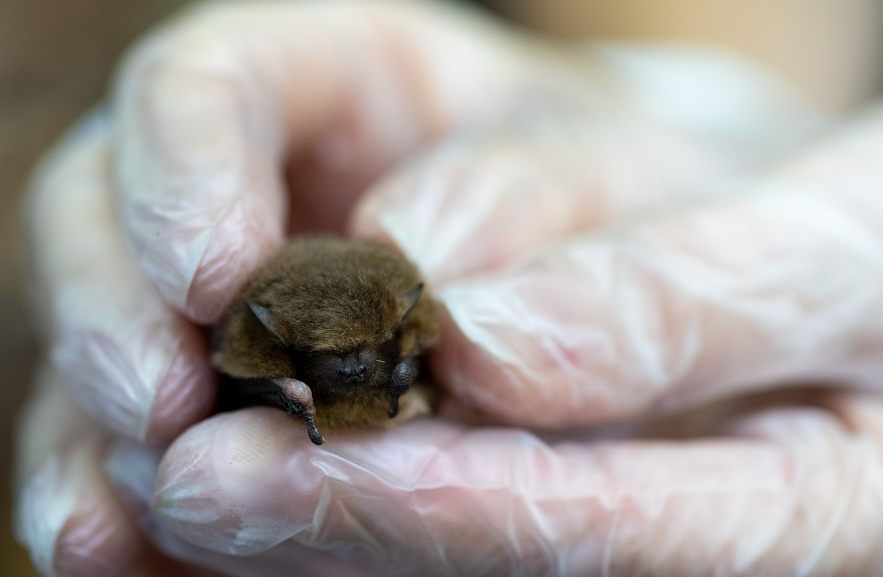One year after Chester Zoo was given a near £1m grant from the government’s Green Recovery Challenge Fund to create and connect wildlife habitats across the city of Chester, conservationists have revealed major progress in their efforts to recover local biodiversity.
The ambitious ‘Nature Recovery Corridor’ scheme - a partnership between a host of organisations including the zoo, Cheshire West & Chester Council, the Canal & River Trust, Sustrans, the Land Trust and Cheshire West Communities Together – is aiming to restore wildlife-rich habitats between Chester and Ellesmere Port and contribute to the recovery of declining species in need of urgent help.
A number of local schools and community volunteers are involved and taking conservation action as part of the project, which gives disadvantaged groups the opportunity to gain better access to nature.
Now, 12 months since being awarded funding to for the project, the team of conservationists heading up efforts to boost wildlife in and around Chester has revealed a number of highlights. Among them:
- More than 23 hectares of meadow and long grass habitat, which provides essential habitat for pollinators has been established.
- 2.5 hectares of canal has been cleared from the invasive plant floating pennywort, making the canal safer and more biodiverse, allowing an array of native wildlife such as otters and kingfishers to thrive.
- 250m of wetland has been created to provide habitat for secretive birds such as snipe and water rail.
- Reedbeds have been brought under sensitive management, enhancing nesting opportunity for migrant birds such as grasshopper and reed warblers.
- New pond areas have been created to help aquatic life, including frogs, toads, newts and dragonflies, as well as providing a water source for mammals such as foxes and badgers.
- Hedgerows have been restored, providing nectar in the spring for bees and berries in the winter for birds.
- 30 native apple and pear trees have been planted to form a new orchard, providing vital new habitat.
- In addition to these habitat improvements, community groups, schools and community leaders have been taking conservation action across the city including planting for pollinators, creating bog gardens, wildflower areas and bug hotels and installing ponds and bird boxes.
Helen Bradshaw, a UK wildlife conservation expert at Chester Zoo, is leading on a scientific project to monitor and research the new habitats as they’re being created. She said:
“We’re on a mission to create new spaces for our amazing native wildlife to thrive here in Cheshire and our journey to transform this huge stretch of land between Chester and Ellesmere Port is now well underway.
“What’s special about the Nature Recovery Corridor is its focus on restoring or creating a whole range of different habitat types – from greenspaces in communities to reedbed and grasslands and all of the areas that connect these places together. The ecological crisis we’re attempting to tackle means that many habitats are at risk and so that variety and interconnectivity is key to successfully recovering declining species.
“Through work we’ve been carrying out to survey what species are in the area, we’ve been able to confirm that rare nathusius’ pipistrelle bats are present on land within the corridor, which is incredibly exciting. For the first time, we’ve been able to manage areas of grassland which secretive harvest mice rely on and the wetlands we’ve created have already filled with water and we hope these habitats will flourish in the years ahead. We’re collecting lots of scientific data and, hopefully, in another 12 months’ time we’ll be able to confirm lots of other exciting species living in the area too.”
Hannah Brooks, Chester Zoo’s Community Engagement Manager, is overseeing the scheme. She added:
“We’re losing wildlife at an alarming rate, not just globally but here in the UK, and so there’s never been a more pressing time for people to come together and take a stand for nature.
“This project is showing what a difference real collaboration between various organisations, specialists, volunteers and engaged, wide-ranging local community groups can do. Already more than 7,000 people have joined us in getting involved and the pride that local communities are taking in the project and the greenspaces on their doorsteps is exactly what’s needed if we’re to see long-lasting transformative change. With everyone invested and everyone connected to nature, we can fight back and reverse species decline."
The Nature Recovery Corridor is being funded by the government’s Green Recovery Challenge Fund and has already created 13 jobs, including five trainees. The fund was developed by Defra and its Arm's-Length Bodies. It is being delivered by The National Lottery Heritage Fund in partnership with Natural England, the Environment Agency and the Forestry Commission.
Related Members
-
News
 Belfast Zoo helps to bring Christmas joy to Children’s Hospital 19th December, 2025Belfast Zoo joined the Lord Mayor of Belfast, Councillor Tracy Kelly, on Monday (15th December) to help bring festive cheer to the Royal Belfast Hospital…
Belfast Zoo helps to bring Christmas joy to Children’s Hospital 19th December, 2025Belfast Zoo joined the Lord Mayor of Belfast, Councillor Tracy Kelly, on Monday (15th December) to help bring festive cheer to the Royal Belfast Hospital… -
News
 Colchester Zoological Society welcomes new arrivals 19th December, 2025This December, Colchester Zoological Society (CZS) welcomed some exciting new arrivals! A young male pygmy hippo, Mikolas, from Zoo Dvur Kralove…
Colchester Zoological Society welcomes new arrivals 19th December, 2025This December, Colchester Zoological Society (CZS) welcomed some exciting new arrivals! A young male pygmy hippo, Mikolas, from Zoo Dvur Kralove… -
News
.png?w=100&h=100&zc=1&f=jpeg&hash=8d175f93cde920c5ba23c8ea7f92e55a) Blog: Understanding the human side of zoos 16th December, 2025Why are zoo researchers increasingly looking to social science? Dr Nieky van Veggel explains the significance of understanding the human dimension…
Blog: Understanding the human side of zoos 16th December, 2025Why are zoo researchers increasingly looking to social science? Dr Nieky van Veggel explains the significance of understanding the human dimension…



